Tag: Video
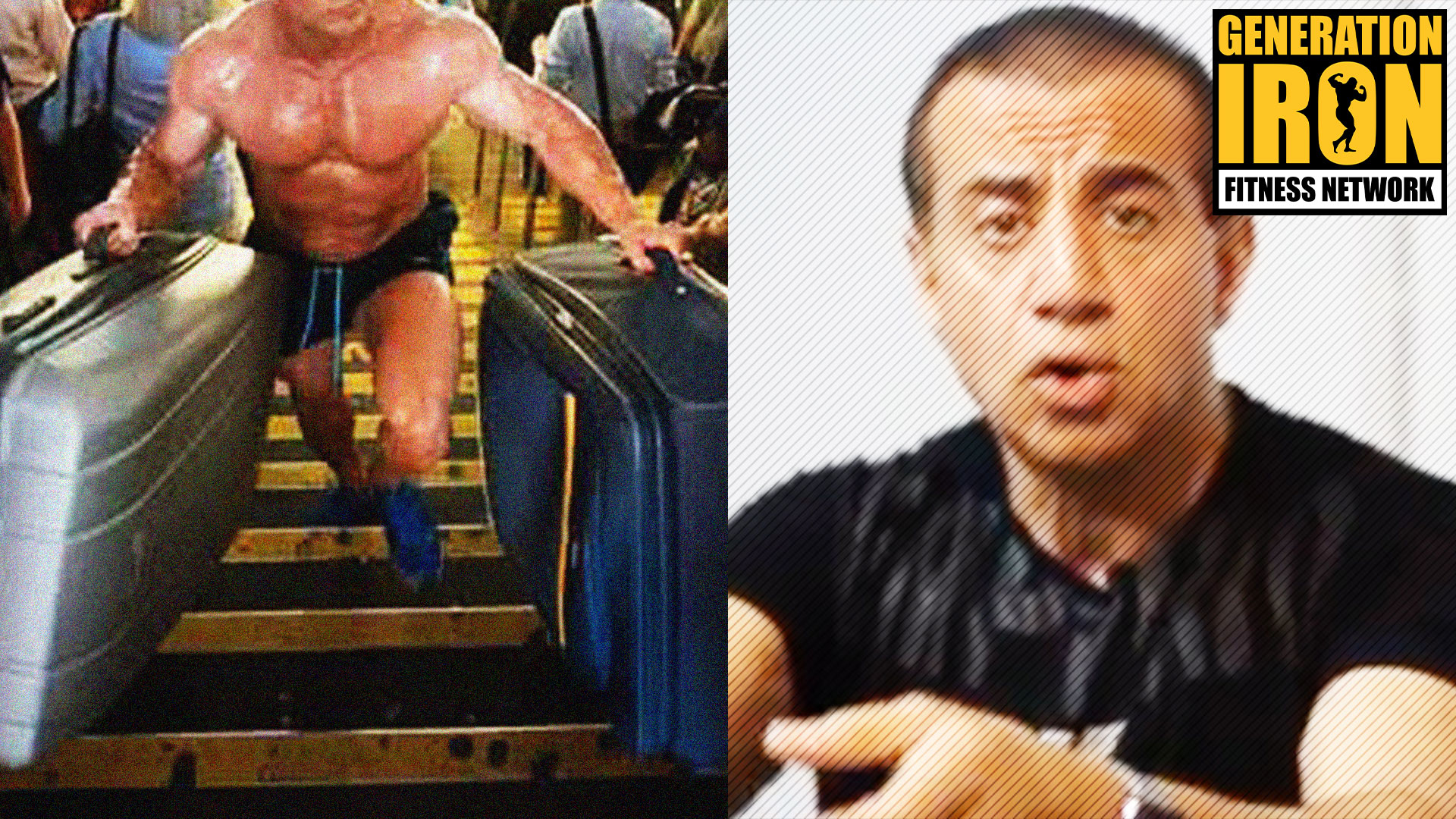
George Farah: How To Travel Before A Competition Without Ruining Your Physique
[embedded content]
Traveling takes away from a normal bodybuilding routine. Here’s how to avoid ruining your physique.
While a bodybuilder might first compete in their local state pro shows, eventually all pro bodybuilders must travel to compete. This presents an interesting challenge. Competition prep is a very delicate and specific time for pro bodybuilders. Traveling can disrupt that routine. So how do pro bodybuilders prevent ruining their physique while traveling to a pro show? In our latest GI Exclusive, George Farah explains how to properly travel without ruining your bodybuilding physique.
At some point or another, a successful bodybuilder will have to jump onto a plane to compete at a major pro show. It might be the New York Pro, Chicago Pro, Arnold Classic, or Olympia. In either case, long term travel will be involved. How do bodybuilders successfully travel so close to a competition without disrupting their prep diet and training?
We asked this very question to legendary bodybuilding coach and guru George Farah. His advice, while aimed at competitive bodybuilders, can also be very insightful for anyone looking to travel living a bodybuilding lifestyle. A massive and shredded physique requires a very strict diet and training. That goes out the window when you’re stuck on a plane for six-twelve hours being fed airline food. It’s never perfect – but George Farah has key tips to keep you on point.
While it may seem the biggest challenge is not getting the proper diet, the truth is that water weight is your biggest enemy while traveling. This is due to staying still for so long in one place sitting up. Whether it’s a car, a plane, or a train – sitting still for so long will cause your body to look “soft” due to water weight. That’s why George Farah stresses the importance of getting up and walking every 45 minutes of traveling.
It’s essential to getting blood flowing and preventing your water weight from going out of whack. In addition to this, if you are going to a show or someplace to showcase your physique – make sure to arrive 48 hours beforehand. This give you extra time to adjust once you land if anythings starts to look off.
It should also be noted that George Farah’s walking advice is a great tip for anyone traveling long distance – not just bodybuilders. Taking some time to stretch and walk every 45 minutes helps prevent the possibility of blood clots. While rare – if this does form it can eventually dislodge and flow to vital organs such as your heart. That can ultimately cause serious damage.
So George Farah’s advice is powerful on two fronts. It helps maintain your physique while traveling and also can help prevent blood clots. It’s a win/win situation. So make sure to take Farah’s advice seriously. It may sound simple and ineffective – it can actually make a big difference.
You can watch George Farah go into more detail about the key rules of traveling without ruining your physique in our latest GI Exclusive interview above!
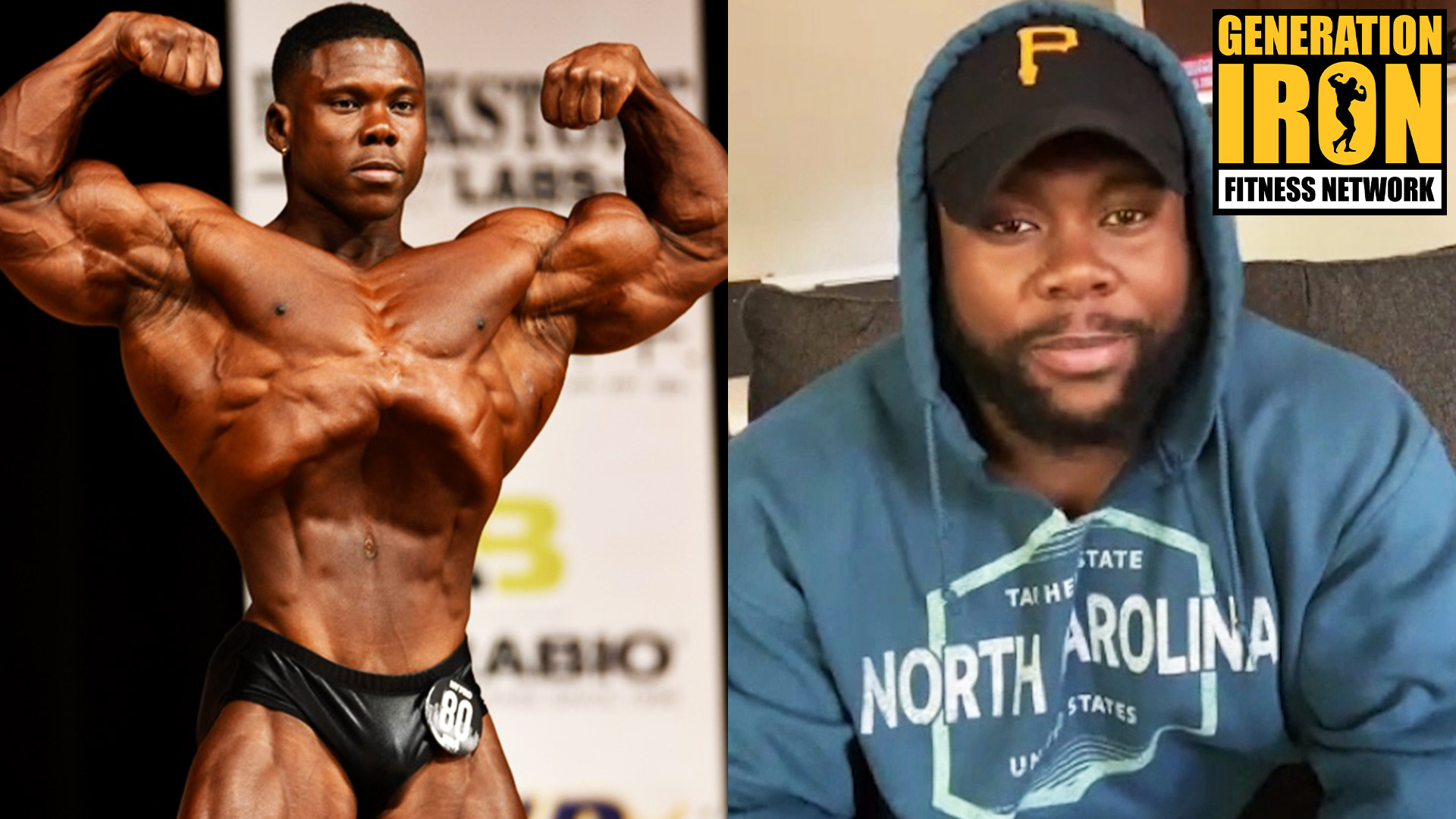
Keone Pearson Full Interview | Last Year’s Lockdown Prep, Genetic Phenom Claims, & More!
[embedded content]
Watch the full uncut GI Exclusive interview with Keone Pearson.
Keone Pearson’s first competition was in 2017. Only three years later and he’s been dubbed a genetic phenom with big possibilities in his future. During his early years, Keone also had the distinction of being trained briefly by Flex Wheeler. He became an “it” competitor and all eyes were on every move he made. This past weekend, he won the Chicago Pro 2021, reigniting the hype behind his name.
Just last year, we were able to connect with Keone Pearson to talk about his rising star status among other topics about his training, nutrition, and future plans during an uncertain time for the world. With his recent win – we decided to now release the full uncut interview.
Over the past year we’ve released multiple GI Exclusive segments from our interview with George Peterson. This uncut full length interview including topics such as his early status as a genetic phenom, the pressures that come with it, and how he trained during the uncertainty of the lockdown in 2020 and other topics.
Listen To Our Keone Pearson Interview On The Generation Iron Podcast
Our full length interviews are now also in podcast form! Subscribe to the Generation Iron Podcast for candid, full length interviews with the biggest names in bodybuilding, fitness, combat, and strength sports.
Listen to the full Keone Pearson interview here:
On The Pressures Of Being Dubbed A Genetic Phenom
Keone Pearson details what it was like to suddenly be a name in headlines across the web. It certainly made him nervous. It also threatened to distract his focus away from the most important thing – training his physique to perfection so he can live up to the hype.
Ultimately, he received some good advice from his coach at the time. He was told to simply avoid social media and the web. Don’t look at the comments or the posts. Just do what you need to do quick for your sponsors… then put your head down and get back to training.
This helped Keone block out the stress and anxiety and focus on competing. With each passing year and each competition under his belt, Keone becomes more experienced. Perhaps soon he will become no longer a promising young phenom and instead a proven champion.
So far his fondest moment has been winning the New York Pro. It’s his proudest accomplishment to stand tall on Steve Weinberger’s very own stage. Now poised to compete in the Men’s 212 division – perhaps he will make a new greater memory in the form of a major win. Only time will tell – but Keone hopes to prove himself worthy of the prodigy title bestowed upon him.
Keone Pearson Details His 2020 Lockdown Training
In an interesting window into the past of the pandemic, we spoke with Keone Pearson about the lockdowns that spread across the country mid-2020. At the time, we were only a few weeks into the lockdwon. It’s an interesting look into how Pearson was planning to keep his body in pro shape despite gyms closing.
Keone Pearson discusses how, initially, the lockdowns provided a good break for recovery. He makes mention of the legendary Flex Wheeler and how he would typically take 2-3 weeks off after a big show. This kind of mental and physical recovery is what Keone was looking for. By being forced upon him – it allowed him to bring himself to a reset.
Of course, the lockdowns and pandemic have lasted much longer than a few weeks. Luckily, gym openings did eventually return. And it seems like his reset break helped. He just won the Chicago Pro 2021. Keone Pearson has long been seen as a future champion in the sport. This win further builds that hype. We can’t wait to see what he has in store after a more traditional year when this pandemic is behind us.
Wrap Up
Keone Pearson is a powerhouse bodybuilder who is also open to going in-depth on some of the most vital topics in bodybuilding. That’s why you should check out the full GI Exclusive interview above! He shares his personal experience and tips for training, nutrition, and more.
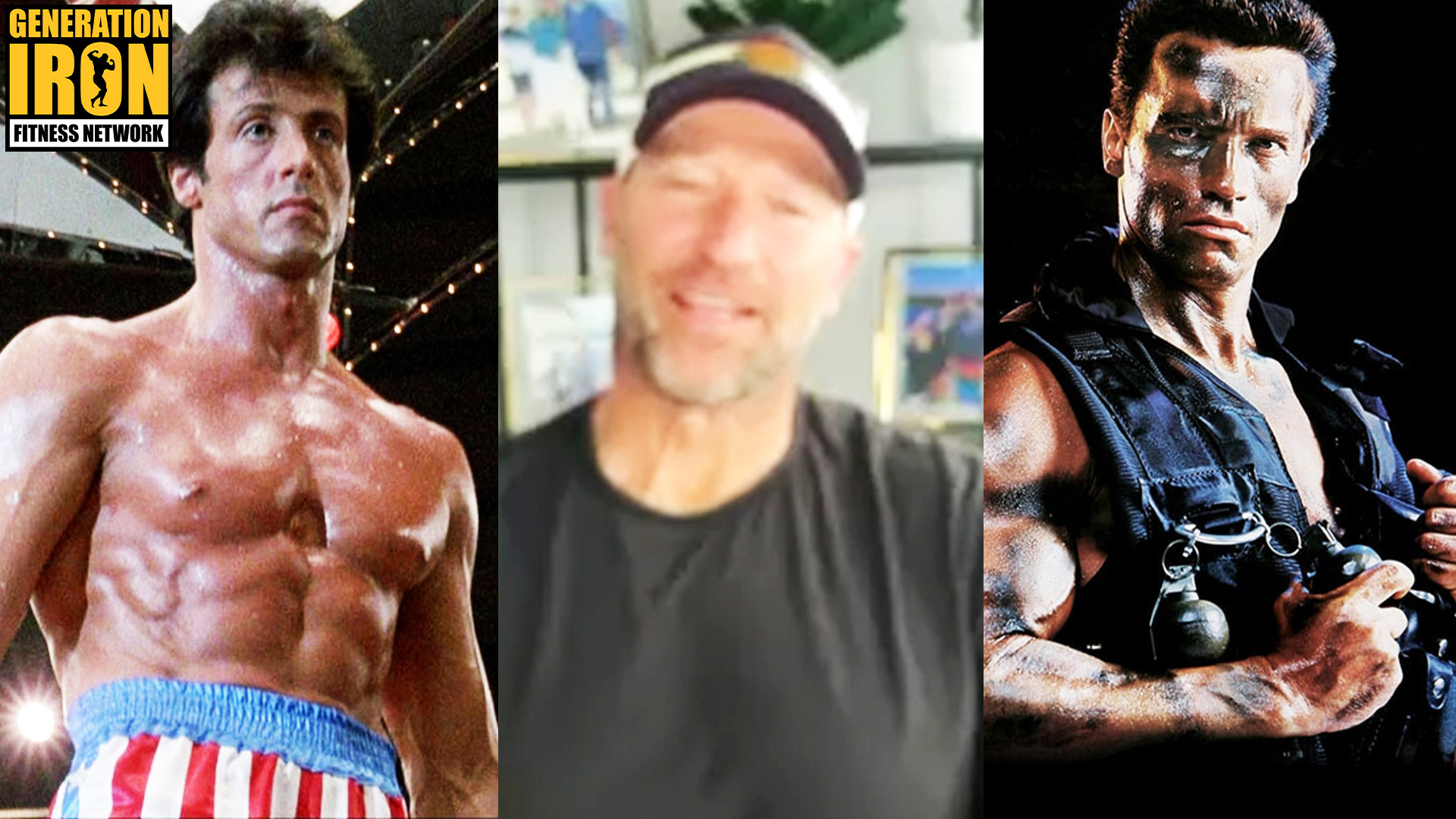
Gunter Schlierkamp Debates: Sylvester Stallone Movies Vs Arnold Schwarzenegger Movies
[embedded content]
Which muscle action star has better movies: Sylvester Stallone or Arnold Schwarzenegger? Gunter Schlierkamp answers.
There was a golden era of muscle-bound action movies in the 80s. Two of the biggest stars from that era were Arnold Schwarzenegger and Sylvester Stallone. Both brought powerful physiques to the mainstream via blockbuster films. But of these two shredded actors – who had the best movies? We asked that very question to Gunter Schlierkamp. In our latest GI Exclusive, Gunter Schlierkamp makes his pick between Sylvester Stallone and Arnold Schwarzenegger movies.
While majority of our interview segments deal directly with bodybuilding and strength sprots trends – we sometimes like to throw a few curveball fun questions into the mix. That’s why during our conversation with Gunter Schlierkamp we asked him to pick his favorite action star – Sylvester Stallone or Arnold Schwarzenegger.
Both of these actors were significant in bringing chiseled muscle onto the mainstream blockbuster circuit. Schwarzenegger was, of course, a pro bodybuilder himself. While Stallone didn’t match his size – he brought an unprecedented amount of muscle to the screen compared to majority of Hollywood actors. It was a golden era of sorts for muscle in Hollywood.
So who does Gunter Schlierkamp prefer more? He was torn – he didn’t want to directly choose one over the other. Instead, he focused on the things that made each actor different and why he liked those qualities.
For Sylvester Stallone, Schlierkamp felt that his films brought more of a message behind the stories. Films like Rocky and First Blood had something to say beyond being fun action films. On the other hand, Arnold Schwarzenegger’s films focused more on flash and bang. The cartoonish nature of his action films are entertaining in their own right.
Gunter Schlierkamp also makes mention of Schwarzenegger’s comedic side. With films like True Lies, Jingle All The Way, and Kindergarten Cop – Schwarzenegger showcased that he had comedic chops to match his action muscle. It’s a big part of what allowed him to stay relevant in Hollywood. While he was not a Shakespearean level actor – he had true versatility in his roles.
Ultimately, Gunter Schlierkamp enjoys the work of both actors equally. He finds a different thing to enjoy about each muscle-bound actor’s films. Which films do you prefer? You can watch Schlierkamp go into full detail by watching our latest GI Exclusive interview segment above.
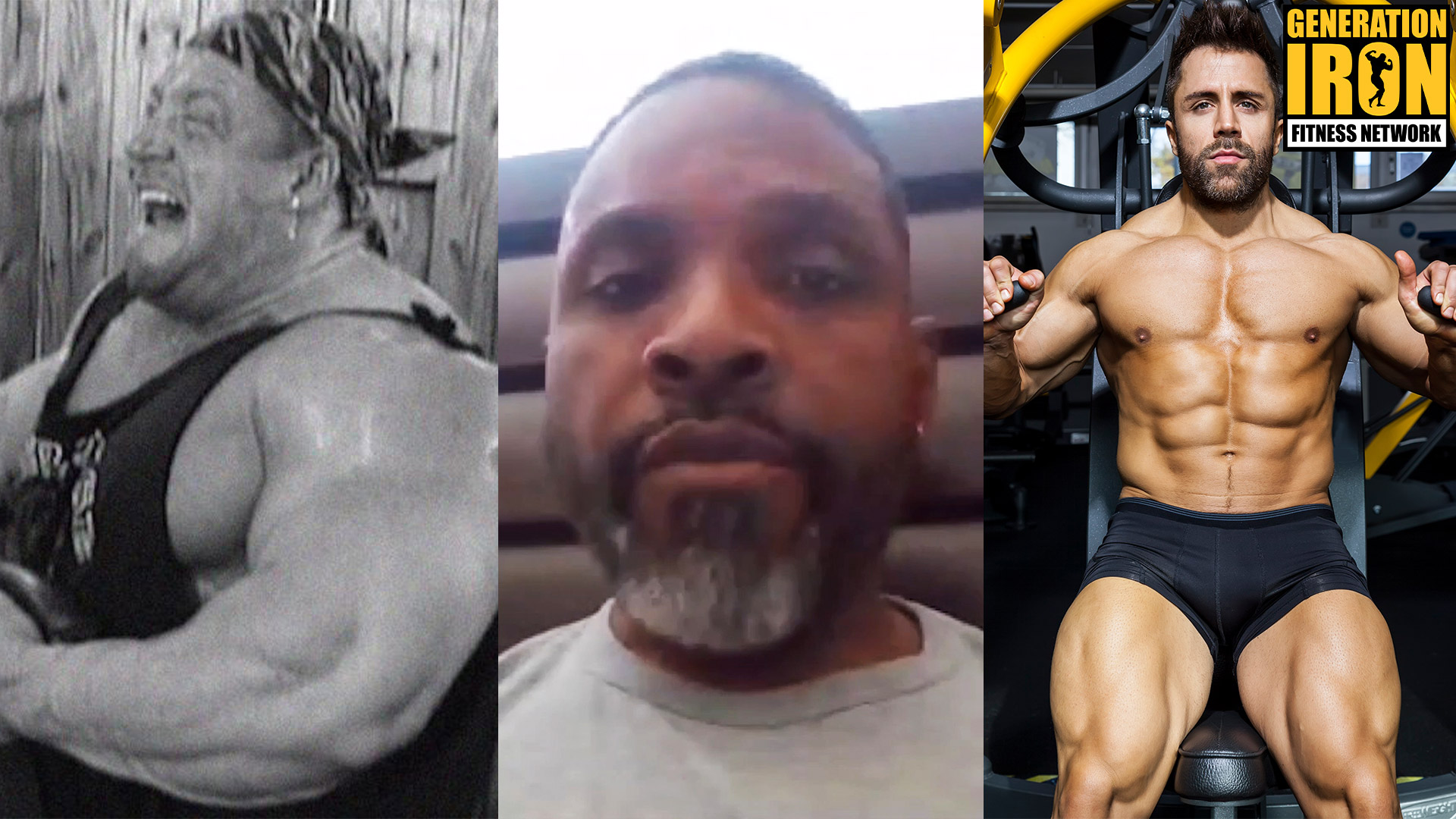
Melvin Anthony: Bodybuilders Today Train Hard, But They Can Train Harder
[embedded content]
Melvin Anthony talks about new school bodybuilders and their training ethic.
Melvin Anthony is a bodybuilder that was in his prime between the second Golden Era of the 90s and the modern era we see today. He competed from the late 90s through to 2008. So he brings an interesting perspective on the recent debate about modern bodybuilding. Is the quality not up to par with the 90s and earlier? Or is this an unfair criticism? Do bodybuilders today not train as hard as earlier eras? In our latest GI Exclusive interview, Melvin Anthony believes that bodybuilders train very hard today… but thinks they can also train harder.
Melvin Anthony doesn’t want to to knock the new school era of bodybuilders. He understands how general sweeping statements can paint a broad stroke on a very diverse group of athletes. That’s why when we asked him about the current state of bodybuilding – he was very careful with his words. He doesn’t think that there is a bad training ethic in bodybuilders today – but he does think that it could push to the next level to match the greats of yesteryear.
In fact, history is very important to Melvin Anthony. He worries that we are not focusing enough on the history of bodybuilding to learn from what was done in the past. Anthony thinks that social media and short attention spans might be preventing bodybuilders today from reaching their best.
“I’m not saying they’re not training hard,” Melvin Anthony states in our interview. He continues:
“I’m not saying that they are not worthy of what they are getting on stage. But there’s a level that they can get to that they haven’t tapped into yet. And I believe they will. Hopefully they’ll get it. Hopefully they’ll start talking to a Flex Wheeler or a Jay Cutler – ‘Hey man, how did you train. Can you show me what you did?’ Watch how those guys train… I’m not saying they’re not training as hard. I just think they can train harder.”
Melvin Anthony stresses the difference between training hard and training beyond hard in a similar manner as past legends. He thinks that the immediacy of the internet has changed the attention span of everyone – including bodybuilders. He worries that they don’t deeply learn enough about the past and actually engage with it.
But Melvin Anthony also makes a point to say he’s hopefully that this will pass. The current era of bodybuilding seems to be almost a transitional one. We still have some greats of the early aughts competing such as Phil Heath and Roelly Winklaar among others. The new crop of bodybuilders, such as Hunter Labrada or Nick Walker, are only just now exploding onto the scene.
Melvin Anthony is optimistic that these bodybuilders are only on the beginning of their journey – and that their training will become even more focused as they continue to grow as athletes. He hopes that the new generation will learn from the past greats and become the next legends of the sport.
You can watch Melvin Anthony’s full comments about new school bodybuilding and training in our latest GI Exclusive interview segment above.
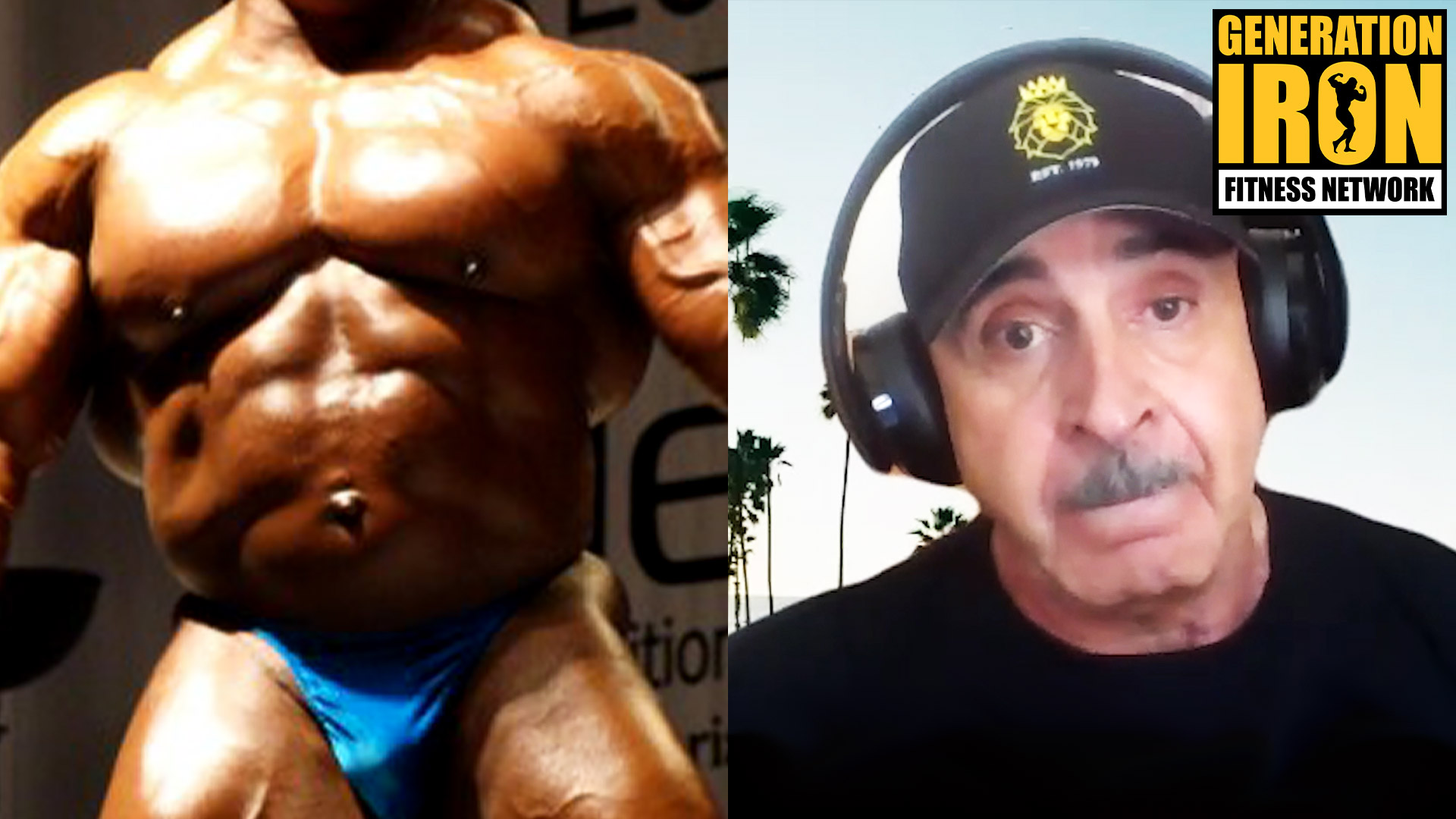
Samir Bannout: “No Bodybuilder Should Accept The Problem We Are Having Today”
[embedded content]
Samir Bannout: “Mass has to come with class”
Samir Bannout is a bodybuilder who was inspired to compete by the Golden Era of the sport. He was also lucky enough to make his way into the pro leagues right at the tail end of the Golden Era. The sport has changed a lot since then. While Bannout sees a lot of good discoveries happening over the decades, he also thinks the sport has accepted certain bad discoveries as well. He wants to try and help course correct the sport and inspire a new generation by looking at the past. In our latest GI Exclusive interview, Samir Bannout explains why the increased mass of the past few decades need to now be matched with “class” as well.
Samir Bannout doesn’t think that increased mass monster size in bodybuilding is inherently a bad thing. In fact, he understands that as technology and science changes – so too does bodybuilding. The limits have been pushed to new levels. That’s the nature of any sport – for athletes to push boundaries and set new standards.
But Bannout also believes that in pushing new boundaries of mass, other negative changes have been accepted as well. Namely, Samir Bannout believes that the new increase in mass has led to less attention to conditioning. Not only that – but the focus on mass has led to some seriously unhealthy habits that pro bodybuilders were not taking back in the Golden Era.
We asked Samir Bannout if he thought that the Golden Era of bodybuilding held better physiques than the bodybuilders of today. He didn’t answer the question directly. He does believes that some of the changes in physiques today are supremely impressive. Bodybuilders like Ronnie Coleman showcased a new level of perfection – and he is being remembered as a legend for it.
But the cost of how this changed bodybuilding overall has led to some changes that Samir Bannout doesn’t agree with. The size of Ronnie Coleman has remained but hardly anyone matches his kind of conditioning. More importantly, he thinks that the new level of mass that has been desired by bodybuilders has led to extremely risky methods. Athlete want to get big “at any cost.” The health of the sport is at stake.
Samir Bannout makes a quick statement that he thinks all bodybuilding should live by. “Mass has to come with class.” What he means by this is that bodybuilders shouldn’t do merely anything to build more mass.
“You don’t want to be a champion and die at 30 or 40 by crossing the line,” Samir Bannout states in our interview. Here’s referring to the increased risks that bodybuilders are taking to build mass fast and push new limits. This usually involves higher doses of PEDs compared to what athletes were taking back in the Golden Era.
Samir Bannout hopes that we can find a middle ground between the advances bodybuilding has made with physiques while also looking and learning from the past of bodybuilding. It’s often said today that Arnold Schwarzenegger’s physique wouldn’t even land in the top five of today’s athletes. But perhaps this is part of the problem. Perhaps there’s something between Arnold Schwarzenegger and Ronnie Coleman that can be achieved. A blending of the old way and the new that can lead to a “classier” version of the sport – to use Samir Bannout’s words.
Do you think that the modern era of bodybuilding has pushed he limits too far? Watch Samir Bannout’s full comments in our latest GI Exclusive interview segment above and then decide for yourself!
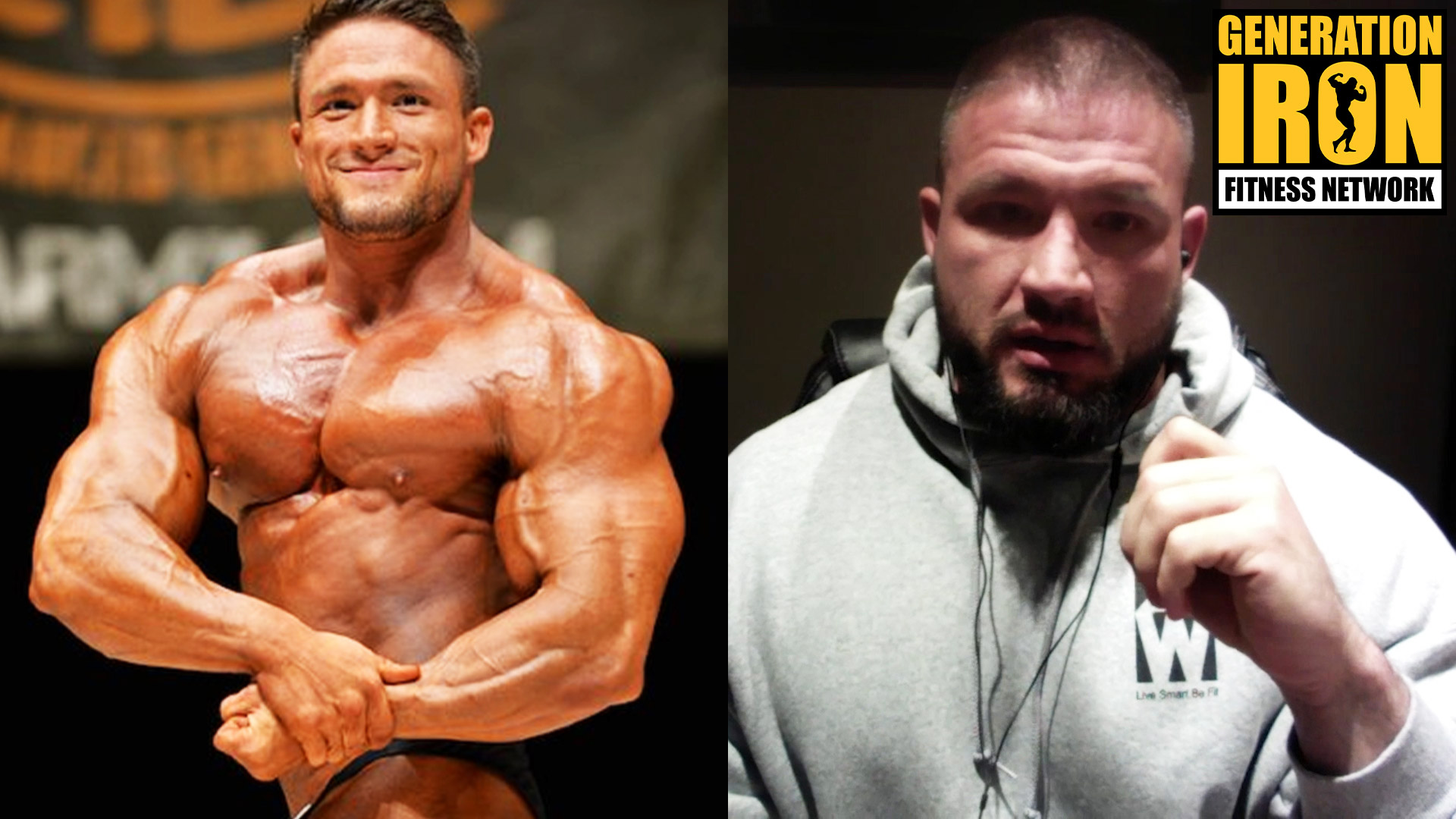
Zane Watson: I Can’t Be Perfect At Men’s 212 Weight
[embedded content]
Zane Watson looks to the future of his career and potentially moving up to the Men’s Open division.
One very interesting thing about Zane Watson is how completely candid and honest he is about his own bodybuilding physique and progress. He’s not a blunt controversial talker – but he will plainly talk about his own deficiencies vs his successes. For example, in our previous segment he was very open about life being more than just bodybuilding 24/7 – despite his desire to be a champion competitor. That’s rare for athletes looking to be the best.
So when it comes to his career in Men’s 212 – he is once again directly honest about his current situation. He is on the edge between divisions – unsure if he wants to go all in on Men’s Open or continue with Men’s 212. It all comes down to his weight. In our latest GI Exclusive interview, Zane Watson explains how dropping down to 212 pounds hurts his physique – and his thoughts on moving up to Men’s Open.
As Zane Watson has aged, he’s found it harder to come in naturally under 212 pounds. This is required in order for him to compete in the Men’s 212 division. It’s natural for athletes in this category to bulk up and then cut down to make weight. But Watson is coming to the realization that he physically can’t bring his weight down without sacrificing the quality of his physique. On the other hand, he ideally would sit right at 225 pounds to pull of his perfect physique. This is also on the lighter side for Men’s Open – where athletes typically land around 250 pounds or higher.
“I’m in a really weird spot,” Zane Watson stats plainly in our interview. He continues:
“I don’t think I have more to accomplish in 212 just because I can’t be perfect at that weight. I’m 222 pounds with 5% body fat. And for me to pull 12 pounds from that, 10 pounds from that, it hurts my look.”
Ultimately, this strange spot doesn’t concern Zane Watson much. He’s looking ahead at the possibility of competing in Men’s Open. He’s applied for the Arnold Classic this year. This competition doesn’t hold the Men’s 212 event, so he would have to go Open regardless. For him, this can be a test to see how he holds up.
He knows at first he won’t place first. Again, he’s bluntly honest about this with himself. But he will still train like he can be a champion. Somehow he’s able to keep those two thoughts in his head at once. Not only that – but he’s also not too worried about being on the light side for Men’s Open.
Zane Watson thinks that if Men’s Open was only a weight contest, bodybuilders would simply step on a scale and the highest number wins. He looks to athletes like Dexter Jackson as examples of what can be accomplished regardless of trending size in the division.
Vlad Yudin counters by mentioning Shaun Clarida, a bodybuilder who for years struggled to find champion status in the Men’s 212 division. Finally, after never giving up, Clarida won the Men’s 212 Olympia in 2020. Perhaps there is still a future in Men’s 212 for Zane Watson as well.
Watson agrees that persistence can pay off. But he knows his body well. He’s convinced that his ideal weight hovers around 225 pounds rather than 212. Genetically, he simply can’t bring his best package below 212 pounds. He would rather bring a perfect physique at 225 pounds, despite being lighter on stage than most competitors, than go onto stage knowing his physique could be better.
You can watch Zane Watson go into full detail about Men’s 212 vs Men’s Open in our latest GI Exclusive interview segment above!
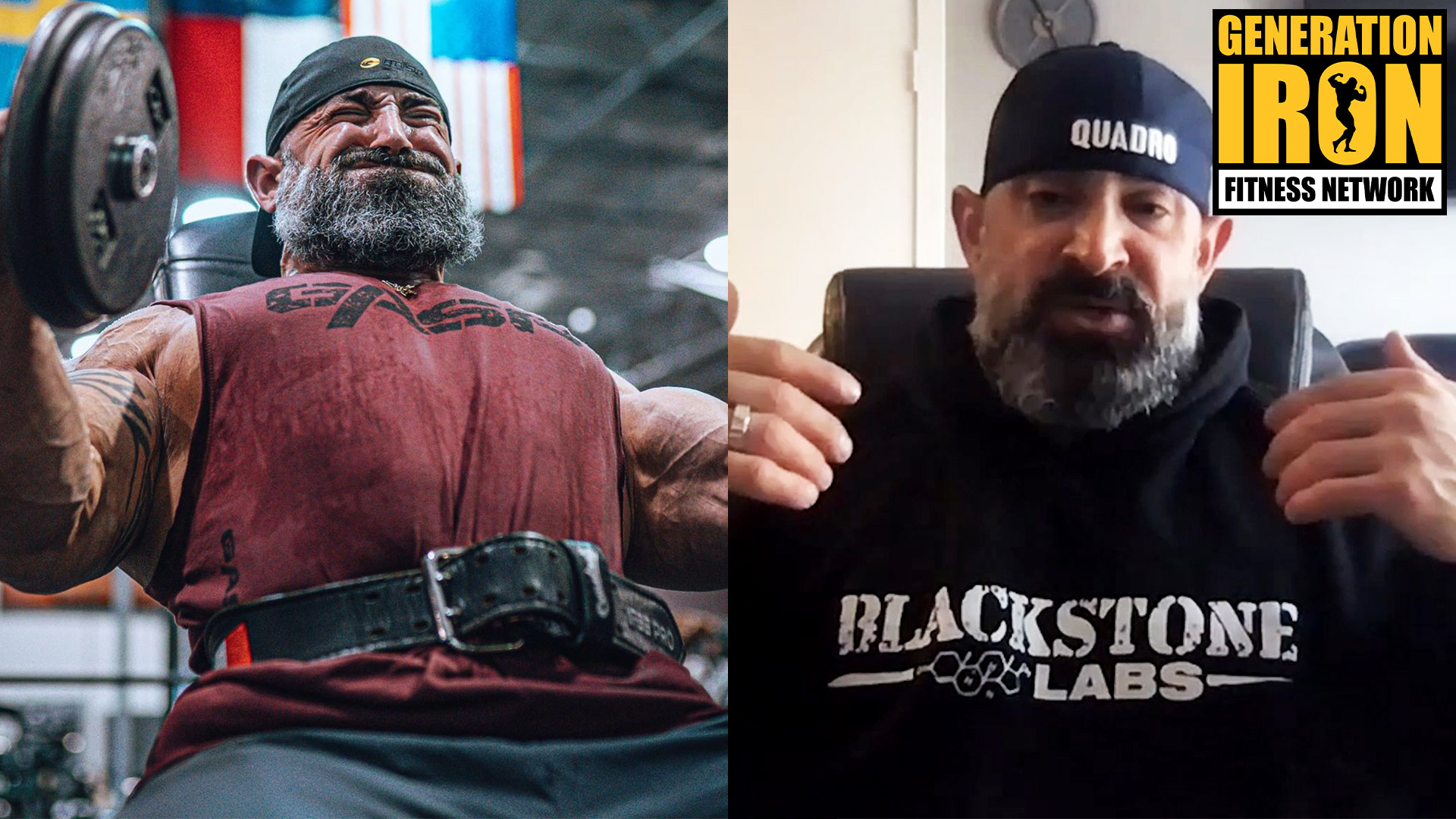
Guy Cisternino: Why You Shouldn’t Worry About Heavy Weight vs Light Weight Training
[embedded content]
Guy Cisternino shares some wisdom as to why people should stop worrying about free weights vs machines or heavy weight vs light weight.
A common question that comes up when people are looking for bodybuilding advice is what generation training style they should focus on. Is it better to do more free weights or more machine exercises? Is it best to do heavy weight and low volume or light weight and high volume? Guy Cisternino is someone who has been notoriously known for his hardcore heavyweight training. But surprisingly, he gives a different kind of advice when it comes to these general questions. In our latest GI Exclusive interview, Guy Cisternino explains why you shouldn’t worry about free weights vs machine or heavy weight vs light weight training.
In one of our previous interviews, Guy Cisternino talked about how Branch Warren was his biggest inspiration. The reason for this was due to his hardcore passionate training style. It’s how Cisternino himself loves to train. He worries that not enough young people still have that hardcore passion in the gym anymore.
But that hardcore style of training has less to do with what is successful for bodybuilding and more to do with the culture. While Guy Cisternino loves to train hardcore – he also understands it is not necessary to be a massive shredded bodybuilder. Rather than it being a necessity for success – he simply sees it as a cultural passion that excites him. He likes that attitude and that atmosphere.
That’s why when we ask him whether or not heavy weight vs light weight matters. Or whether or not free weight vs machines matter – his answer is more open minded. Guy Cisternino has been through some injuries and is now a slightly older (but not old) bodybuilder. He hooked up with John Meadows as his trainer more recently – and Meadows changed up the kind of training he does in light of his age and injuries. What Cisternino learned through this process changed his perception on what is important in bodybuilding training.
To Guy Cisternino, it matters less whether or not you do machines vs free weights or heavy weight vs light weight. Instead, it matters more how you break up your body parts and how much focus you put into each workout. Yes, there are little differences – pros and cons to each approach – but ultimately they are not game changers. Whether you lift heavy weight or hight weight or free weight or machines – you can be a successful and massive bodybuilder with any of these approaches. What matters more is how you do these tactics and the way you break up each body part throughout your week of training.
What he means by this is that by changing up how you break up the body parts you work in a given workout – you can be saving your joints from too much pressure in one session. This can save you injury, wear, and tear in the long run. So someone like Guy Cisternino can train hardcore to his liking with less risk (though still there is always risk) of injury. This provides longevity. So you can be like Dexter Jackson or you can be like Branch Warren.
Both of these bodybuilders are legendary in their own right and they both used vastly different techniques – but if you break up the body parts right, you can extend your longevity as an athlete.
You can watch Guy Cisternino go into full detail in our latest GI Exclusive interview segment above!
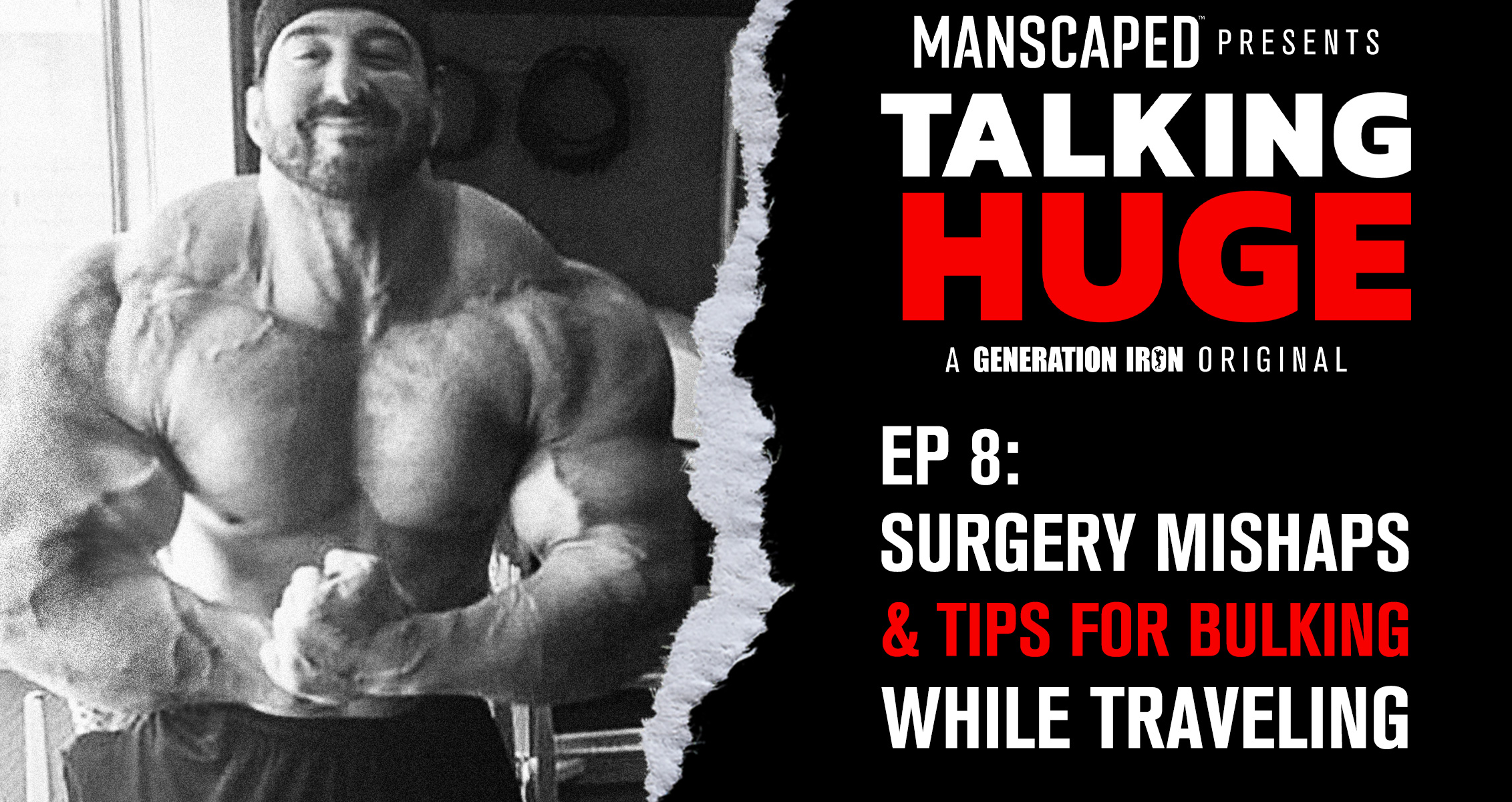
Talking Huge With Craig Golias | EP 8: Surgery Mishaps, Travel Diet Tips, & More
[embedded content]
Craig Golias discusses the tragic death of Odalis Santos Mena, training to failure, and how to maintain a bodybuilding diet while traveling.
Welcome to another episode of Talking Huge – a weekly digital series in which Craig Golias talks in-depth with Vlad Yudin on the latest trending topics in bodybuilding. Raw, honest, and uncut – Craig Golias shares his opinions on all things bodybuilding. In this episode, Craig Golias talks about the tragic and recent passing of Odalis Santos Mena, training to failure, and diet trips for bulking while traveling.
There were a lot of topics to cover in this week’s episode of Talking Huge after a busy week and as the bodybuilding season moves closer and closer to Olympia weekend. The top of the week was met with tragedy in the bodybuilding world. Odalis Santos Mena sadly passed away at just 23 years old due to a botched surgery. Craig and Vlad discuss the situation and open up the conversation to surgeries in bodybuilding as a whole. They also discuss training to failure, how important it is in bodybuilding, and tips to properly train to failure without injury. Other topics include how to stay motivated after taking a break from the gym, the best supplements for bodybuilders, and how to properly diet while traveling without losing gains. There’s a lot to cover so let’s jump right into it.
The Tragic Passing of Odalis Santos Mena
Odalis Santos Mena’s death this past week hit the bodybuilding world hard. Not only is any death sad – but to pass away at such a young age (23 years old) is truly heartbreaking. Additionally, the death was seemingly preventable. Odalis Santos Mena underwent a procedure to stop sweating. A strange, and rare procedure indeed. Unfortunately, it was a procedure she would not survive. Though there has yet to be an official investigation – signs point towards the anesthesia as the main attribution to her death. Was it due to a freak accident, malpractice, or something else? We’re not quite sure at the moment.
Craig Golias and Vlad Yudin send condolences out to friends and family of Odalis Santos Mena. They also talk about how much more sad it feels when a death happens so randomly as this one. All deaths are tragic. But seemingly sudden and simple ones such as this feel heavier on the heart. Of course, the sad truth is that there is always an inherent risk to any procedure or surgery that requires anesthesia.
Craig and Vlad talk about other surgeries that are popular in bodybuilding and the risks involved. Is this kind of surgery culture bad in the big picture? Is the risk, even when minimal, not worth it when an outcome like this could happen? Craig and Vlad break it down.
Craig Golias’ Tips On How To Travel And Stay Huge
Craig Golias is a bodybuilder who values staying huge above all else. He has admitted previously to doing unhealthy things with his diet just to achieve that in the past. More recently, he has become more educated on how to properly bulk with clean meals, stay huge, and keep himself healthier.
But when it comes to traveling – a lot of healthy options get thrown out to of the window. If you have a six hour flight or even longer, how do you maintain the mass amount of clean meals required to keep bulking? Is it okay to take one day off? Or does it throw off everything completely?
Craig Golias breaks down his tips and tricks to staying huge and staying on diet while traveling. The truth of the matter is, sometimes you have to do some things that are less pleasurable when it comes to taste and comfort in your diet. Pre-prepped meals are always the way to go. If you need to eat over 6,000 calories in a day – make sure to bring pre-prepped chicken and rice on your flight.
Craig recounts having to cut up his cooked chicken into small cubes and breaking it down into tiny bags so that it would pass security on check out. He would then scarf down little cubes of chicken on the plan every few hours. It wasn’t glorious. It felt like work in fact – but sometimes that is what is necessary to maintain a bodybuilding diet.
Ultimately, Craig Golias states that anyone who is serious about their bodybuilding lifestyle and diet will see food as a means to an end rather than a pleasurable dining experience. Like Jay Cutler once said, “I don’t eat for taste, I eat for function.” Traveling is not an excuse to break your bodybuilding diet. It’s simply a challenge you’ll have to overcome.
Wrap Up
There are far more topics discussed in this episode than we can cover in this article. You can watch Craig Golias and Vlad Yudin discuss other topics such as training to failure and tips on how to avoid getting injured. They also discuss the best supplements that all bodybuilders should take who are looking to bulk up. You can check it all out in the latest episode of Talking Huge above! Make sure to check out Talking Huge every week on Friday – only on the Generation Iron Fitness Network!
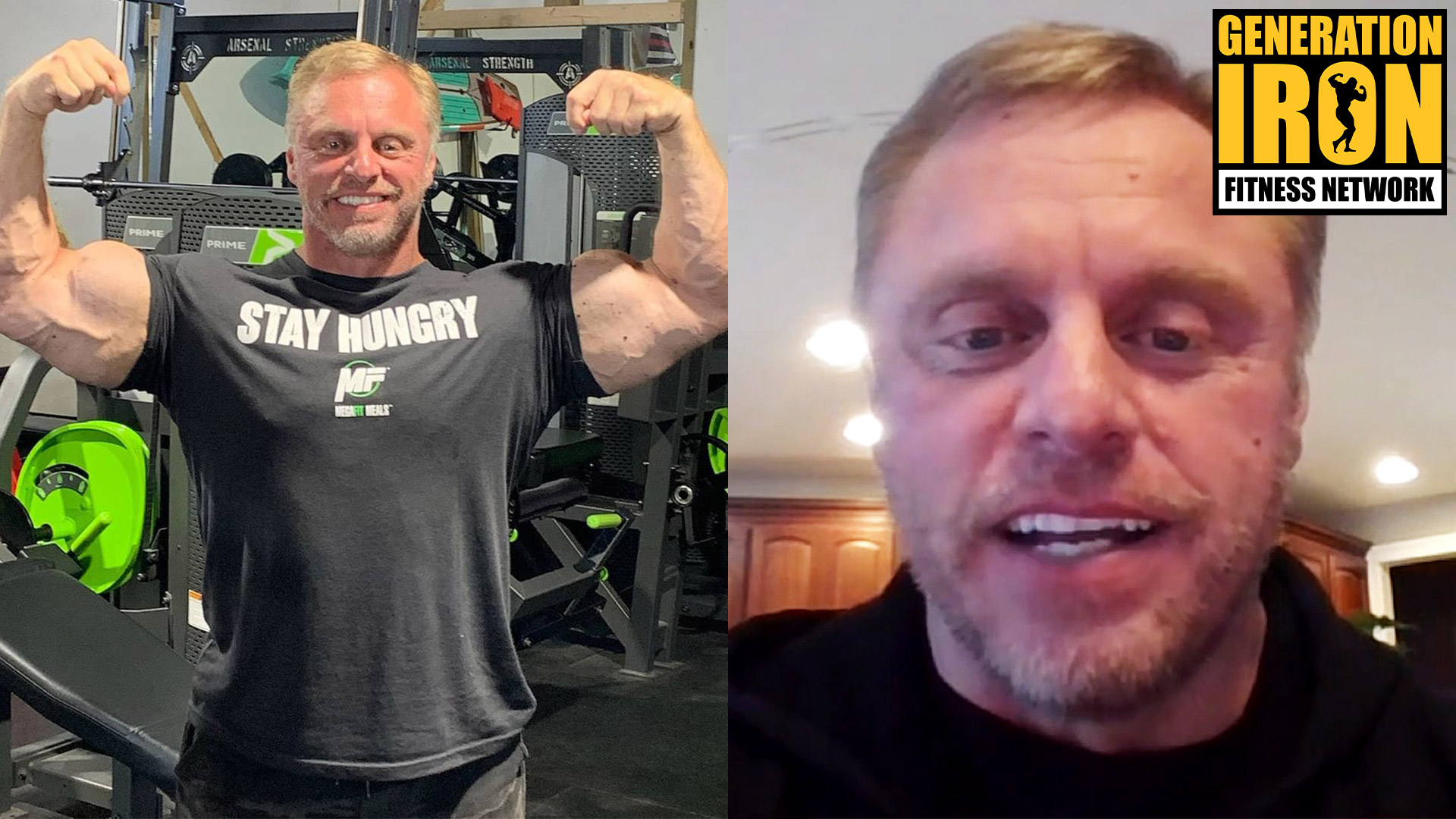
John Meadows Returns Full Interview | Training Shaun Clarida, Biggest Bodybuilding Mistakes, & More
In May of 2020, the bodybuilding world was in shock at the announcement that John Meadows had suffered a heart attack. Thankfully, he made a full recovery. Later in 2020, one of the pro bodybuilders that Meadows trains, Shaun Clarida, earned himself the Olympia title.Now just under a year after his heart attack and Shaun Clarida’s big win, we reconnected with John Meadows to look back at the entire experience, his recovery, working with Shaun Clarida, and what the future holds.
Over the past few months we’ve released multiple GI Exclusive segments from our interview with John Meadows. Beyond his recovery, we are now releasing the full length interview including additional topics such as the biggest mistake bodybuilders make, lifting heavy vs lifting light, and an analysis of the Olympia 2020.
Listen To Our John Meadows Interview On The Generation Iron Podcast
Our full length interviews are now also in podcast form! Subscribe to the Generation Iron Podcast for candid, full length interviews with the biggest names in bodybuilding, fitness, combat, and strength sports.
Listen to the full John Meadows interview here:
An Inside Look Into Shaun Clarida’s Olympia Training Strategy
John Meadows makes it clear that in Clarida’s case, slow and steady wins the race. Clarida had been making small changes to his training prep year after year. Trail and error worked towards finding the best strategy that worked most efficiently for his body.
Meadows can’t attribute the win to any sort of secret. It was simply persistence. Not only in the willingness to train hard – but also the willingness to think hard. What we mean by that is the ability to stay vigilant on the overall training plan. What can be improved? What isn’t working? What is the ultimate combination of exercises to inch up to that next level?
This is the strategy that John Meadows used on Clarida to bring him to perfection and a Mr. Olympia win. Of course, now that he’s found that perfect combination and physique – where does he go to ensure another victory in 2021?
John Meadows sticks to the same plan. There were still some tweaks that he believes Shaun Clarida can make to further tighten up even the smallest of flaws. Beyond those changes, the key element going into 2021 is intensity. According to Meadows, there is a bad habit of critics believing that intensity needs to be pulled back reaching the ideal physique. That a pro bodybuilder can go “too intense” thus causing a missed mark at the next competition.
John Meadows thinks this is all bullshit. He understands that beginner and intermediate bodybuilders might need to pull back on intensity until they become more experienced. But for pro bodybuilders like Shaun Clarida, he believes that finding little ways to push intensity even farther is the best tactic to guarantee a second Olympia victory.
The Biggest Training Mistakes Bodybuilders Make Today
John Meadows is a former competitive bodybuilder who now helps train pro bodybuilders today. He is deeply involved with the bodybuilding community and works with both veteran and up-and-coming bodybuilders throughout the industry.
That’s why we thought he was the perfect person to ask – what are the most common bodybuilding mistakes happening today? You may not be making all of these mistakes – but it can be a helpful guide for what just might be the biggest oversights the new generation of bodybuilders are making.
John Meadows starts off by stating one of the biggest mistakes he sees today comes as a direct result of social media. He believes that the constant ability to see incredible physiques on apps like Instagram create a warped perception of how bodybuilding really works. More specifically, that bodybuilders now attempt to stay extremely lean all year.
The reality is that in order to improve your physique, you need to go through adjustment phases throughout the year. If you want to build more size, you can’t stay extremely lean for the entire year. You need to go through a bulking phase to help build more mass – then cut it down to a lean look once you’ve achieved the size you want.
Bodybuilders today feel so much pressure to appear lean for social media – that it is actually hindering these bodybuilders’ ability to build bigger and better physiques within a timely manner. It’s slowing down the process towards bigger success.
The other big mistake is one that you might not expect. John Meadows believes that there has been advice growing in popularity within the bodybuilding community. Advice that he believes is actually wrong and should be debunked.
John Meadows believes that young bodybuilders are being advised to train less hard. Due to this, the past few years have produced bodybuilders that don’t train as hardcore in the gym. While it’s true that there is a limit to how far a bodybuilder should push in the gym – Meadows thinks the advice has become over-exaggerated in recent years. This causes bodybuilders to train with less intensity than is needed to succeed in the sport.
The good news is – John Meadows thinks that the newest crop of bodybuilders are starting to amp up the intensity again. Based on the bodybuilders he has seen recently, he thinks a new era of hardcore training athletes is on the way up in bodybuilding.
Wrap Up
John Meadows is a man who can provide rare in-depth knowledge on all things bodybuilding from training perspective. There are far many more topics we discussed in our hour plus interview that could be vital for anyone looking for insight into optimizing bodybuilding training. So make sure to watch our latest full length GI Exclusive interview with John Meadows above!
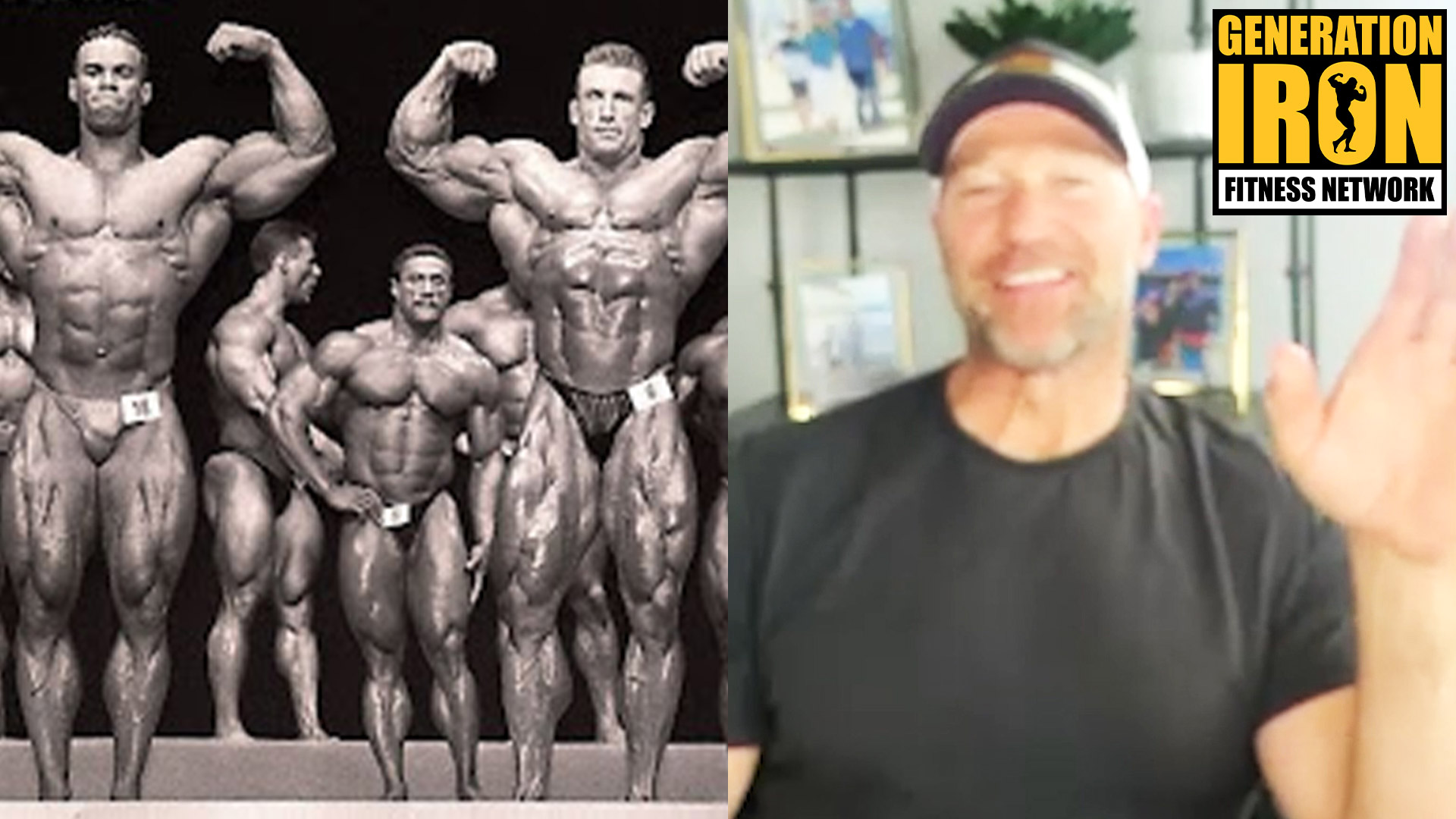
Gunter Schlierkamp: I Competed In Bodybuilding When It Was At Its Best
[embedded content]
Gunter Schlierkamp details the excitement he had moving to America and training at Gold’s Gym in the 90s.
It’s often said that the 90s into the early 2000s is the new Golden Era of bodybuilding. Or perhaps the second coming of the Golden Era. With athletes like Flex Wheeler, Ronnie Coleman, Kevin Levrone, and Shawn Ray among others – it’s hard to disagree. It also seems that Gunter Schlierkamp shares this sentiment as well. Schlierkamp was an outsider who entered into American pro bodybuilding during this time. In our latest GI Exclusive interview, Gunter Schlierkamp reflects on his journey to becoming pro and why he’s glad he was lucky enough to compete in what he calls the best era of bodybuilding.
No one is born a bodybuilder. If you were to look back at childhood photos of any famous bodybuilder – you would likely not expect how physically massive they would eventually become. That’s what makes origin stories so fascinating in this sport. There are millions of avenues and walks of life that eventually point towards pro bodybuilding. For Gunter Schlierkamp – his journal also involved leaving his home country to find his footing in the United States.
During our conversation with Gunter Schlierkamp, we asked him to reflect on how he discovered bodybuilding and what brought him to America. He details how quickly he saw growth once he fell in love with weightlifting. Eventually, his physique was so impressive – someone took him under his wing. That person insisted that he needs to go to America. He wanted him to compete with the greats at events like Night of Champions and, of course, the Mr. Olympia.
Gunter Schlierkamp’s journey to the United States was not an easy one. He describes first arriving and having to basically find places to sleep like a nomad. He would sleep in abandoned factories and in cars. He went head first into traveling to America and it took him some time to get his financial footing. Since he couldn’t get a bank account – he trusted someone to take his money and keep it in a bank for him. That ended poorly as he was taken advantage of.
Ultimately he made his way to California, got some financial footing, and started training at Gold’s Gym. He gushes at how lucky he was to be born at a time when he would compete and train in the 90s. Suddenly he went from idolizing athletes like Flex Wheeler to being in the same room and training alongside him. It was a dream come true.
He also believes that he competed at the best time in bodybuilding history because of the famous Joe Weider contracts. At a time before social media and over-saturation of supplement companies – Schlierkamp was able to land a Weider contract. It was like becoming a salary employee in bodybuilding. Suddenly his passion for bodybuilding was his full time career.
Today, those kind of contracts don’t happen. While there is more opportunity for profit – it’s more entrepreneurial. It relies on social media excellence (which also requires a little bit of luck) to obtain followers and generate revenue. There’s more control – but also more risk. Internet relevancy can turn on a dime.
You can watch Gunter Schlierkamp go into more detail about his bodybuilding origins and why he believes the 90s is the best era for competitive bodybuilding. Watch it all in our latest GI Exclusive interview segment above!
